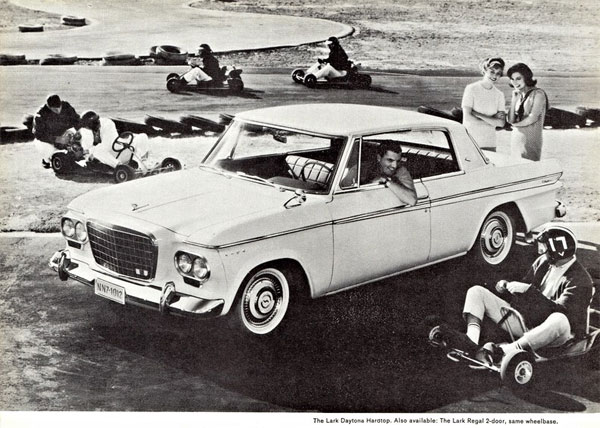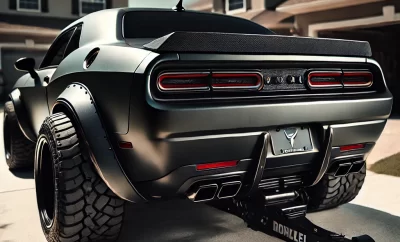Best Muscle Cars
Was the Studebaker The First Muscle Car?

By Dave Ashton
Its commonly thought that the first muscle car was the 1964 Pontiac GTO or even the 1949 Oldsmobile Rocket 88. The tick list being a huge V8 engine in a small(ish) car, performance parts, usually two door and available to the average car buyer. The origins seem quite well established, but according to classiccar.com, there’s an argument for the R1 and R2 Studebaker Lark being the first example of the breed.
The Studebaker Lark was launched in the fall of 1958, for the 1959 model and according to Wikipedia, ‘the Lark was the first car of its size to offer a V8 engine.’ (hmmmm…, check your facts Wikipedia)
From 1959 to 1960 the fullbore engine consisted of a 259ci. (4.2 L) V8, with a 289ci.(4.7 L) V8 coming in 1961. One other de facto standard in a muscle car is the supercharger, which apparently first came to the 1957 Studebaker Golden Hawk coupled to a 289 V8. This one was a Paxton VS57, which increased power to 275HP, using a two barrel carburetor. For a full rundown of the car specifications, check out the full article at classiccar.com.
The article compares the Pontiac GTO to the Studebaker for muscle car origins, concluding that the GTO, which sold in far bigger numbers won the title, mainly due to popularity. But it excludes the other side of the story, the 1949 Oldsmobile Rocket 88. The first rocket 88 came with a 303 cubic inch V8 with 135HP(.debatable) and 283 lb-ft of torque and with an increased compression ratio, a 10% fuel efficiency was achieved. Performance wise, this equated to a 0-60 mph of 13 seconds and a top speed of 97 mph. Extremely rapid for the 1950’s.
It didn’t take long for the likes of Dodge, Plymouth and Pontiac to get the same idea. while the Rocket 88 moved away from its roots and became a much larger vehicle, turning into a full-size sedan.
You could argue that the Rocket 88 was the first V8 engine car to tick all the muscle car boxes. The Studebaker also has a viable say in the story. But, when talking about muscle cars, the 1964 Pontiac GTO is the nearest template to the classic era of the late 1960’s and early 70’s, especially with a more potent 389 ci. (6.4 L) V8 producing 325hp.
Like many evolving muscle cars, the GTO hit its stride in 1968 with the second-generation model. This body shape is what we came to know as a classic muscle car, along with a huge 400ci. (6.6 L) or 455ci. (7.5 L) V8. But, as for which model was the first out of the blocks, is not just open for debate, but as is the term itself.
We’ve been down this rabbit warren a good bunch of times with these past articles. There is no concrete point in time where the term ‘muscle car’ was first used. As long as the automobile has been around, it’s been referred to over the years as having ‘muscle.’ Plus, the very debatable point on the Wikipedia muscle car page which says that the original muscle cars were actually referred to as ‘supercars’.(if anyone out there can give further clarification on the supercar thing, please comment below.)
Which means that the term will always be seen retrospectively, with the terminology being added to vehicles which were not referred to as muscle cars until many years later. Which means all three of the examples above could be muscle cars, none of them or maybe one, depending on which side of the bed you got out of.
As for conclusions, we don’t really have one. Apart from if you want to go off the modern definition and this can still be ambiguous. The Mustang and Camaro are often referred to as muscle cars, but strictly you should call them pony cars. Which means if you want to be liberal minded about the whole affair, the Studebaker could be ‘one’ of the original muscle cars.
Like many great ideas, there’s usually lots of reference points. It’s clear that the late 1940’s and 1950’s brought lots of innovation, with the need for more power and performance. The V8 and no replacement for displacement were the mindsets and those should be the areas of celebration rather than who was the first out of the gates.









0 comments